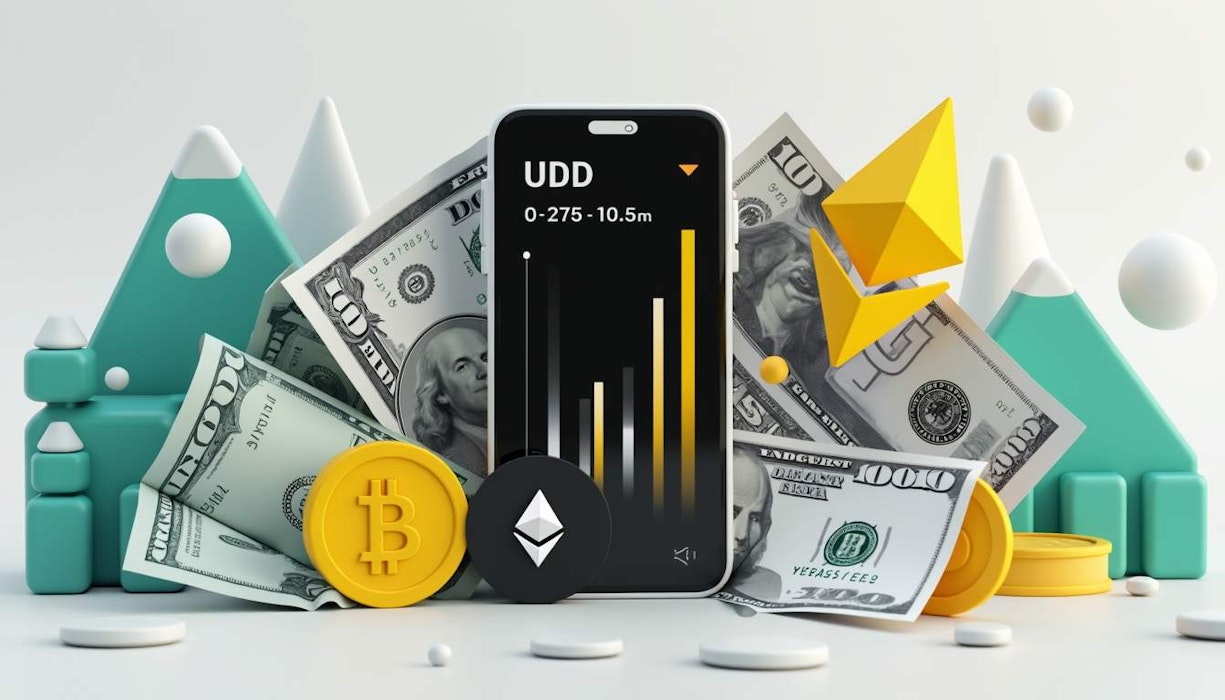Why was USDT delisted?
Tether's USDT faced delisting from major exchanges like Crypto.com due to the European Union's Markets in Crypto-Assets (MiCA) Regulation. The EU aims to create a secure, standardized environment for cryptocurrency in the region, enforcing strict compliance standards. As part of this initiative, several non-compliant tokens—including USDT—are being removed from exchanges.
What's included in the delisting?
The delisting includes several non-compliant cryptocurrencies along with USDT. Specifically, the delisted tokens are: - Wrapped Bitcoin (WBTC) - Dai (DAI) - Pax Dollar (USDP) - Pax Gold (PAXG) - PayPal USD (PYUSD) - Crypto.com Staked Ethereum (ETH) - Crypto.com Staked Solana (SOL) - Liquid CRO (LCRO) - XSGD
The delisting process will begin on January 31, with full removal by March 31. Users are required to convert these assets by Q1 2025—or face automatic swaps into compliant assets.
Will there be a liquidity vacuum?
The removal of USDT, which has been a critical liquidity provider for transactions between digital assets and fiat currencies, is expected to cause a significant decline in liquidity across the crypto landscape. This dwindling liquidity could lead to increased trading times, heightened volatility, and an unstable market environment. The delisting from prominent platforms like Crypto.com and Coinbase could seriously disrupt the ease of transactions that the market has grown accustomed to.
Are there alternatives to USDT?
Alternatives to USDT are becoming increasingly necessary and are appearing on the market. With USDT encountering regulatory hurdles and being delisted from major exchanges, compliant stablecoins stand ready to capture more market share. Circle’s USD Coin (USDC) is emerging as a robust alternative. Renowned for its adherence to U.S. financial regulations, USDC is also undergoing monthly audits, with reserves held in regulated banks. The token has recently gained MiCA approval and is now widely accepted by exchanges and financial institutions across the EU.
What are the exchanges doing to comply?
Exchanges are ramping up compliance measures to meet stricter EU regulations. This includes investing in better monitoring tools, hiring additional compliance personnel, and improving Know Your Customer (KYC) and Anti-Money Laundering (AML) protocols. Major crypto platforms like Binance and Coinbase are allocating resources to bolster their compliance teams and technology. Some exchanges are even pursuing MiCA licenses to remain operational in Europe; others are asking for extensions to adapt to the new regulations.
What are the global ramifications of the delisting?
The implications of USDT's delisting extend far beyond Europe. The regulatory scrutiny directed at Tether is a globally shared concern; in the U.S., the demand for transparency and compliance with anti-money laundering regulations is persistent. This global regulatory pressure could further undermine USDT’s market position and hasten the shift toward compliant stablecoins on a worldwide scale. Notably, USDT's market capitalization has shrunk by approximately $4 billion in the aftermath of Coinbase's decision.
What does the future hold for crypto trading in the EU?
Following MiCA's full enforcement on December 30, 2024, the European crypto landscape has shifted rapidly. While certain platforms have already secured regulatory approval, others are still pursuing their MiCA licenses. The months ahead will be critical as more Crypto Asset Service Providers (CASPs) adapt to MiCA or exit the EU market. The emphasis on transparency and investor protection is expected to stabilize the market but may also limit the range of stablecoins available.
Are MiCA's regulations too strict for innovation?
MiCA's regulations could be viewed as overly restrictive for innovation. The stringent licensing requirements, compliance mandates, and adherence to ongoing regulatory guidelines can significantly increase operational costs, especially for smaller exchanges and new startups. The complex path to obtaining a license and the administrative burden of compliance can be overwhelming, possibly deterring new participants or pushing smaller firms to relocate outside the EU.
What alternatives will arise for cross-border payments?
Emerging alternatives and complementary solutions for cross-border payments include various stablecoins like USDC gaining visibility. Blockchain-based solutions, such as Central Bank Digital Currencies (CBDCs), allow for customizable cross-border transactions. Platforms like Stellar Network provide blockchain-based pathways for instant and clear settlement across countries. Multi-currency support platforms like Mercuryo and Mural offer flexible solutions for cross-border payments. Furthermore, traditional banking integrations with blockchain technology, such as Banco Santander's One Pay FX, provide additional alternatives.
How will exchanges adapt?
Exchanges that operate globally, including those servicing US customers, must comply with EU regulations if they operate in the EU. MiCA mandates that any entity providing crypto-related services in the EU must obtain a license, adhere to AML regulations, and deliver detailed reports. In response, exchanges are boosting their compliance measures to match the stricter EU regulations, investing in improved monitoring tools, and enhancing KYC and AML procedures. The EU's regulatory framework may sway US regulators, potentially setting the stage for international regulatory alignment. The financial and operational toll of MIca's regulations could lead exchanges to rethink their operational strategies, possibly resulting in restructuring or increased investments in compliance infrastructure.
The delisting of USDT indicates a future of decreased liquidity, enhanced volatility, a pivot towards compliant alternatives like USDC, and a broader shift to stricter regulatory standards in the global crypto market landscape. The course of crypto trading in the EU will be significantly molded by these regulatory changes, leaving an indelible mark on exchanges and investors worldwide.
